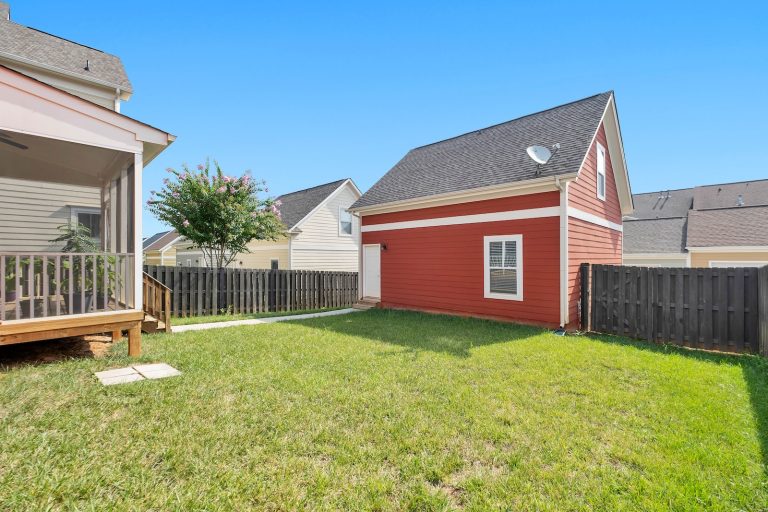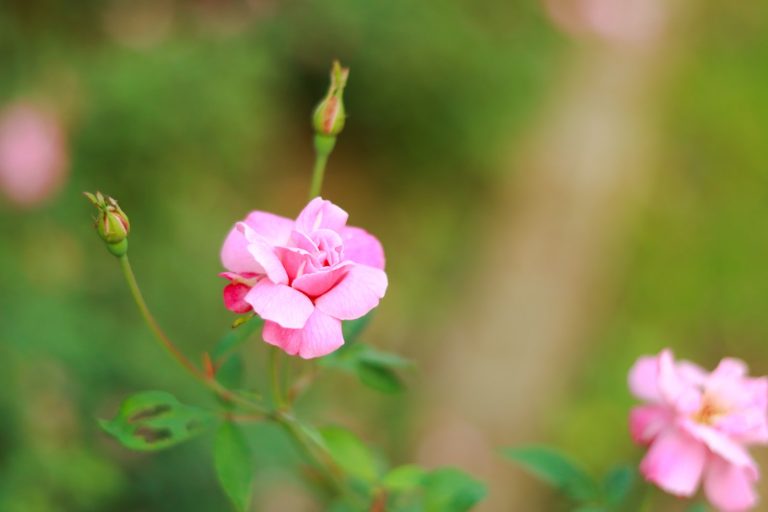Types of Landscape Lighting and Their Uses

Are you tired of your garden or outdoor living space looking dull and lifeless at night? Well, landscape lighting can change all that! Not only does it add a touch of elegance to your yard, but it also adds safety and security.
With so many types of landscape lighting available in the market, it can be challenging to decide which ones are best for your property. Fear not! In this article, we’ll delve into different types of landscape lighting and their uses. So sit back and let’s light up your world!
What is Landscape Lighting?
When it comes to landscape lighting, there are a variety of different options to choose from. Each type of lighting has its own unique benefits and uses. Here is a breakdown of the different types of landscape lighting and their uses:
- Incandescent Lighting: Incandescent lighting is one of the most popular types of landscape lighting. This type of light is very versatile and can be used in a number of different ways. Incandescent lights are available in a variety of shapes, sizes, and colors. You can use incandescent lights to highlight features in your landscaping or to provide general illumination.
- Compact Fluorescent Lighting: Compact fluorescent lighting (CFL) is another popular type of landscape lighting. CFLs are similar to incandescent lights in that they are available in a variety of shapes, sizes, and colors. However, CFLs use less energy than incandescent lights, making them more efficient and environmentally friendly.
- Solar Lighting: Solar lighting is a great option if you want to save energy and money. Solar lights rely on the sun for power, so they are completely free to operate. solar lights are available in a variety of styles, including path lights, floodlights, and spotlights.
- LED Lighting: LED lighting is becoming increasingly popular for landscape lighting due to its efficiency and durability. LEDs last much longer than traditional incandescent bulbs and use less energy as well. You can find LED lights in a variety of shapes and colors, making them a great option for highlighting features or providing general illumination.
Different Types of Landscape Lighting
There are various types of landscape lighting available on the market, each with its own benefits and drawbacks. Here is a brief overview of some of the most popular types of landscape lighting:
- Incandescent bulbs: Incandescent bulbs are the most common type of landscape lighting. They are relatively inexpensive and easy to find, but they consume a lot of energy and generate a lot of heat.
- Halogen bulbs: Halogen bulbs are more efficient than incandescent bulbs, but they are also more expensive. They produce a bright, white light that can be too harsh for some landscapes.
- LED lights: LED lights are becoming increasingly popular for landscape lighting because they are very energy-efficient and long-lasting. However, they can be quite expensive upfront.
- Solar-powered lights: Solar-powered lights are an environmentally-friendly option for landscape lighting. They rely on sunlight to charge their batteries, so they need to be placed in an area that receives direct sunlight during the day.
- Path Lights
- Path Lights: These are lights that are placed along a path or walkway. They can be used to provide illumination for safety purposes, or to simply add a bit of extra light to an area.
- Solar Path Lights: These lights are powered by solar panels, making them a great eco-friendly option. They are easy to install and require little to no maintenance.
- LED Path Lights: These lights are very energy-efficient and have a long lifespan. They come in a variety of styles and designs, so you can find the perfect look for your home.
Spot lights
There are many types of landscape lighting, each with its own unique purpose. In this article, we’ll explore some of the most popular types of landscape lighting and their uses.
One of the most popular types of landscape lighting is solar lighting. Solar lights are powered by the sun, so they’re environmentally friendly and cost-effective. They’re perfect for accenting your landscaping or illuminating walkways and driveways.
Another popular type of landscape lighting is LED lighting. LEDs are energy-efficient and long-lasting, making them a great option for outdoor lighting. They’re perfect for accenting features in your landscaping or providing general illumination in outdoor spaces.
If you’re looking for a more traditional type of landscape lighting, incandescent bulbs are still an option. Though they’re not as energy-efficient as LEDs, they provide a warm, inviting light that’s perfect for outdoor living spaces. Incandescent bulbs are also available in a variety of sizes and shapes, so you can find the perfect fit for your landscape.
Flood Lights
- Flood lights are a great way to light up a large area.
- They can be used to accentuate landscaping features or to provide general lighting for an outdoor space.
- Flood lights come in a variety of sizes and styles, so it is important to choose one that will fit the needs of your particular application.
- Be sure to take into account the wattage of the bulb and the beam spread when selecting a flood light.
Wall Lights
There are many different types of wall lights, each with their own unique uses. Here are a few of the most popular:
- Floodlights: Floodlights are a great way to light up a large area, such as a driveway or backyard. They can be mounted on the wall or on the ground, and they come in a variety of designs and wattages.
- Spotlights: Spotlights are perfect for highlighting specific features in your landscape, such as trees, sculptures, or fountains. They can be recessed into the wall or mounted on top of it, and they come in both halogen and LED models.
- Step Lights: Step lights are designed to illuminate walkways and stairs. They can be flush-mounted into the wall or recessed into it, and they typically come in low-voltage models that use either halogen or LED bulbs.
- Wall Sconces: Wall sconces add a touch of elegance to any landscape and can be used to highlight specific features or simply add ambient lighting. They come in a variety of styles and finishes, and most use either incandescent or LED bulbs.
Step Lights
There are various types of lights available for landscape lighting, each with its own purpose. Step lights are designed to provide a safe and lit path for people to walk on at night. These lights are usually installed on the risers of steps leading up to a front door or along the sides of a path.
Path lights provide general illumination along a walkway, while step lights specifically target the area where people will be stepping. Step lights can be either solar-powered or wired; solar-powered step lights are easy to install and have no cords to trip over, while wired step lights may provide brighter illumination.
Benefits of Using Landscape Lighting
Landscape lighting can provide many benefits to your home and garden. Here are some of the benefits of using landscape lighting:
-Landscape lighting can add beauty and curb appeal to your home.
-Landscape lighting can provide safety and security for your family and visitors.
-Landscape lighting can increase the value of your home.
-Landscape lighting can be used to highlight features of your home or garden, such as fountains, statues, or trees.
-Landscape lighting can provide a romantic atmosphere for weddings, anniversaries, or other special occasions.
How to Choose the Right Type and Number of Fixtures
There are a few things to consider when choosing the right type and number of fixtures for your landscape lighting. The first is the size of the area you are trying to light. Second is the type of light you want to use. And lastly, is the purpose of the lighting.
If you are wanting to light a small area, like a garden or patio, then you will not need as many fixtures as you would if you were trying to light a larger area like a driveway or parking lot. When it comes to choosing the type of light, there are LED, fluorescent, and incandescent options. Each has its own benefits and drawbacks that should be considered before making a decision.
The purpose of your landscape lighting will also play a role in what type and how many fixtures you need. If you are wanting to simply add some ambiance to your yard, then fewer and lower-powered fixtures will suffice. However, if you are wanting to actually provide functional lighting for activities like entertaining or security purposes, then more powerful fixtures will be necessary.
Working with a professional landscape lighting company can help ensure that you end up with the right type and number of fixtures for your needs. They will be able to assess your property and come up with a customized plan that takes all of these factors into account.
Tips for Installing Outdoor Lighting Fixtures
When it comes to outdoor lighting, there are a lot of different fixtures to choose from. Depending on the look you’re going for, you’ll want to select the right fixtures for your space. Here are a few tips for choosing and installing outdoor lighting fixtures:
– Select fixtures that complement the architecture of your home. You don’t want something that will stick out like a sore thumb!
– Make sure the fixtures you select are durable and can withstand the elements. You don’t want your investment to go to waste because it couldn’t handle a little bit of rain or snow.
– Consider using solar powered fixtures if you want an easy and eco-friendly option. Solar panels can be placed in inconspicuous areas to power your lights without the need for cords or batteries.
Conclusion
There are many different types of landscape lighting, each with its own unique purpose and use. In conclusion, landscape lighting is a great way to enhance the beauty of your home and add value to your property. By choosing the right type of lighting for your needs, you can create a stunning outdoor living space that you and your family will enjoy for years to come.

Emma is a talented writer and enthusiastic gardener who shares her passion for plants and gardening on HomeGardenBlog.com. With years of experience in home gardening, Emma has become an expert in everything from planting and harvesting to pest control and soil management.






